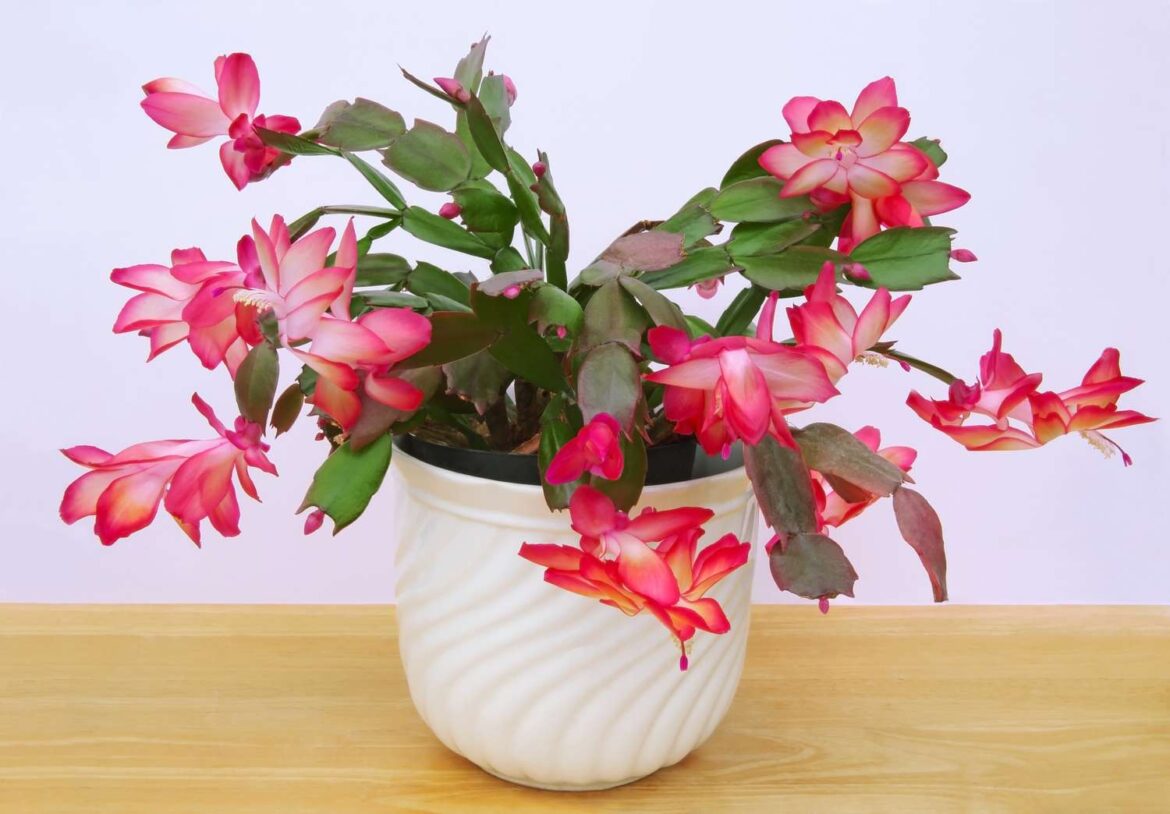Key Points
A Christmas cactus thrives when its soil mimics its natural rainforest home—moist, airy, and fast-draining to keep roots healthy.Experts say the best mix uses regular potting soil blended with materials like perlite, bark, or compost for balanced drainage and nutrients.Avoid heavy soils, excess peat moss, and oversized pots, which trap water and divert energy from blooming.
The Christmas cactus is a type of succulent in the cactus family that is typically grown as a houseplant. It’s especially popular during the holidays, when it produces showy blooms. While this plant is relatively low-maintenance, it needs adequate soil to thrive. Because its native environment is in the rainforests of Southeast Brazil, the Christmas cactus needs soil that strikes the perfect balance between being moist and well-draining. Ahead, our experts explain how to achieve optimal soil conditions for your Christmas cactus.
Lisa Eldred Steinkopf, founder of the Houseplant Guru and author of Houseplants
Kathy Jentz, host of the GardenDC Podcast and co-author of The Urban Garden
Understanding the Natural Habitat of Christmas Cactus
Christmas cacti are tropical plants that live in warm, wet rainforests. “They are epiphytes from South America (Brazil), so they don’t really have soil around their roots in nature,” explains author Lisa Eldred Steinkopf. “They usually receive rainfall every day, yet they dry out quickly, especially with the breezes blowing through the trees.”
In their native environment, Christmas cacti’s epiphytic lifestyle allows them to grow (non-invasively) on top of other plants, tapping their minimal root system into crevices where organic matter is collected. In the wild, they may also live a lithophytic lifestyle, growing on the surfaces of stones.
Key Characteristics of Ideal Christmas Cactus Soil
When you grow a Christmas cactus as a houseplant, you’re asking that plant to thrive in an environment quite different from its native one. To ease this transition, providing proper soil is essential. “The most common mistake is using soil that is too heavy for the plant,” says Steinkopf. “In other words, the soil holds water for too long.
They like to be kept moist (not standing in water). Aim for well-draining soil with plenty of organic matter. This doesn’t need to be an elaborate concoction, and you don’t necessarily need to use a cactus or succulent mix. It is a tropical cactus, not a desert one, so it will be fine in regular, well-draining houseplant potting mix, says gardening author Kathy Jentz.
Best Soil Mix Recipes for Christmas Cactus
As long as the soil drains well, Christmas cacti tend to be fairly forgiving about their precise soil components. This gives you some leeway in the final recipe for your Christmas cactus soil mix. The exact formula is up to you, but the fundamentals of the soil will generally include well-draining potting soil mixed with a combination of ingredients that add nutrients and improve drainage, such as perlite, orchid or pine bark, compost, vermiculite, pumice, and sand or gravel.
Some combinations our experts recommend include:
One part potting soil, one part perlite, and one part barkOne part potting soil, one part compost, and one part perliteOne part potting soil, one part compost, and one part sand One part potting soil, one part compost, and one part vermiculite Two parts potting soil, one part perlite
Common Soil Mistakes to Avoid
Because Christmas cacti are native to rainforests, achieving soil with the right moisture content is very important. You want to avoid soil types that are heavy and retain water. “If using a cactus and succulent soil, I wouldn’t add additional peat moss,” says Steinkopf. “It holds too much water.”
Also, avoid repotting your Christmas cactus in a bigger container too often. “These cacti prefer being a bit snug in their pots. When you up-pot, they are growing new roots to fill that pot, and that takes energy. We want the energy to go into making blooms,” says Steinkopf. She recommends transferring to a new pot only if the plant is root-bound. This should be done in the early spring so the plant has time to recover over the summer.


Comments are closed.